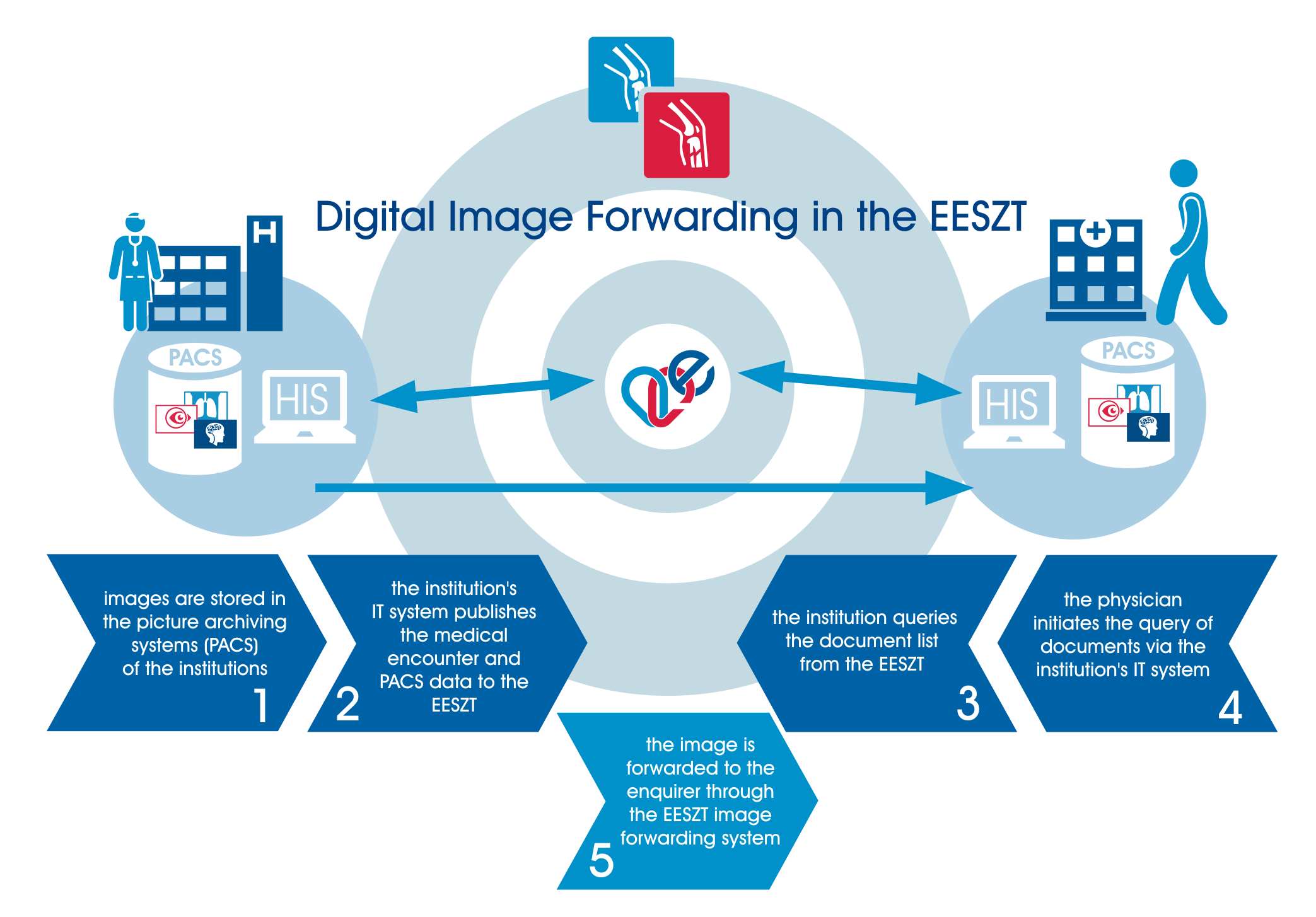Equipment from different manufacturers can be adapted seamlessly into many types of PACS (Picture Archiving and Communications System) systems, and the stored images can be processed by several types of software from different manufacturers.
Digital techniques are being more frequently used in areas where records had not been stored previously (histology, gastroenterology, electrocardiogram (ECG), electroencephalogram (EEG)). Unfortunately, development is hindered by the lack of standards and inadequate support in these areas.
With digital techniques, by applying accepted standards and making use of the possibilities provided by internet connection, digital records can be forwarded in a fast and safe manner among different institutions, which strengthens the safety and efficacy of healthcare. Digital techniques allow the cost effective copying, forwarding, and transfer of images while safeguarding them in their original place.
EESZT offers three ways to realize the above mentioned goals. First, the sharing of digital image material for providers connected to the EESZT. Participants record the list of images acquired at their institution, which can be downloaded by other providers if necessary. Images acquired previously at other institutions can be used in reporting as history, possible progression of the disease can be assessed, and unnecessary diagnostic tests can be avoided.
The second is a digital image forwarding system, which is basically an e-mail system developed for sending images. Why is this necessary? Size restrictions of other emailing systems are not present here, only users registered in the system can send and receive data, which ensures the standards of safety regarding patient data. This system can primarily be used for the swift forwarding of images that have not yet been shared in the central system (e.g. when a patient is being transferred following initial diagnostic assessment).
The third function is teleconsultation, through which the treating physician can ask for professional consultation in complicated cases, improving the quality of healthcare while ensuring standards of safety regarding patient data.

The system differs from other modules of the EESZT in one key aspect. The central system keeps a central catalogue of the images, but does not store the images themselves, only provides a link to the images and a mechanism to retrieve them. The task of the storing and provision of the images when necessary falls to the institutions. Although the central component of the system includes a web-based application, the capabilities of the system can only be utilized by the synchronization of institutional systems (API), which is currently in pilot mode.
Following the launch of the module citizens will be able to prepare a so called Patient CD on the citizen’s portal, which after downloading to their computer they can copy to a CD or pendrive, so they will be able to see the images themselves, or take them to an institution which has not yet joined the EESZT (National eHealth Infrastructure).
Updated: 12.11.2020.


